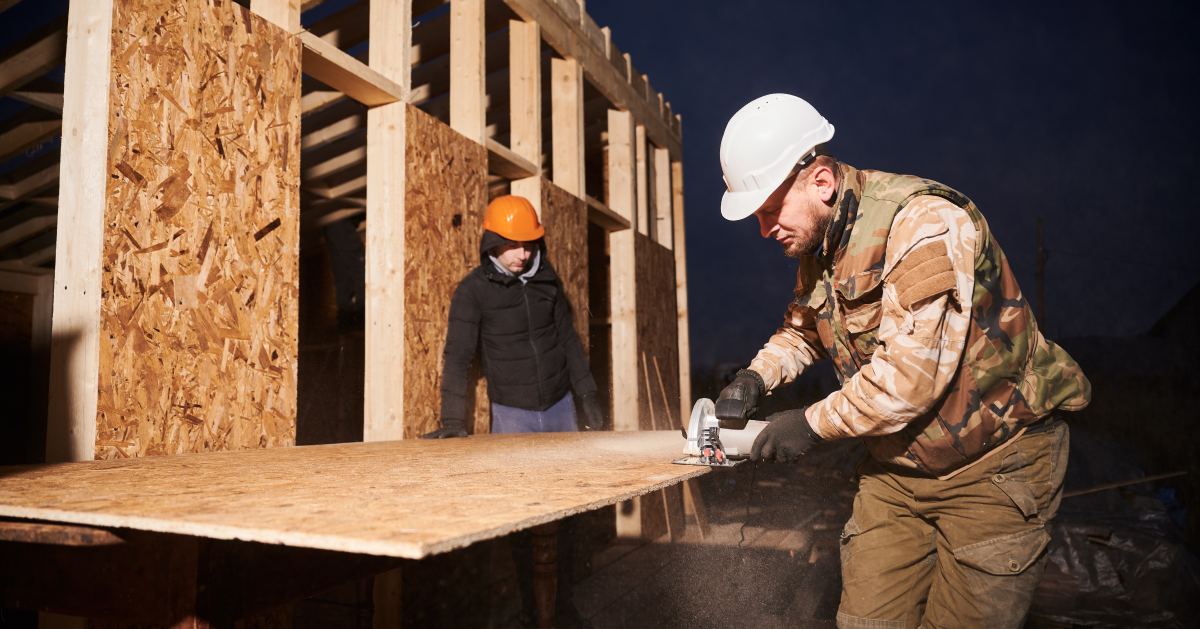When it comes to building materials, particularly for structural sheathing, oriented strand board (OSB) and plywood are two of the most commonly used options. Both materials have their strengths and weaknesses, and the choice between them can significantly impact the performance, cost, and durability of your construction project. This article provides an in-depth comparison of OSB and plywood, highlighting what you need to know to make an informed decision. For more assistance, talk to an expert. Work through consulting services for better results. OSB vs. Plywood? Get the answer here.
Understanding OSB and Plywood
OSB (Oriented Strand Board)
OSB is an engineered wood product made by compressing layers of wood strands (flakes) mixed with adhesives. These strands are arranged in cross-oriented layers to create a strong and rigid panel.
- Composition: Wood strands, resin adhesives, wax.
- Manufacturing Process: Strands are oriented in specific directions, layered, and then compressed under heat and pressure.
- Common Uses: Wall sheathing, roof decking, subflooring, structural panels.
Plywood
Plywood is also an engineered wood product, but it is made by gluing together thin layers (plies) of wood veneer. These veneers are layered in alternating grain patterns to enhance strength and stability.
- Composition: Thin wood veneers, glue.
- Manufacturing Process: Veneers are stacked with alternating grain directions and bonded under heat and pressure.
- Common Uses: Wall sheathing, roof decking, subflooring, cabinetry, furniture.
Comparing OSB and Plywood
Strength and Durability
- OSB: Known for its consistent strength and rigidity. It is less prone to warping and has high shear strength, making it suitable for load-bearing applications. However, OSB can be more susceptible to moisture damage if not properly protected.
- Plywood: Offers excellent strength and durability, with a high resistance to impact. Plywood tends to handle moisture better than OSB, particularly when high-quality, exterior-grade plywood is used. It is less likely to swell or delaminate when exposed to water.
Moisture Resistance
- OSB: While modern OSB panels are treated to be more moisture-resistant, they can still absorb water more readily than plywood. Prolonged exposure to moisture can cause swelling and loss of structural integrity.
- Plywood: Generally more moisture-resistant, especially exterior-grade plywood, which uses waterproof adhesives. Plywood is less likely to swell, warp, or delaminate in wet conditions.
Cost
- OSB: Typically less expensive than plywood, making it a cost-effective option for large projects. The lower price point can be an advantage when budget constraints are a concern.
- Plywood: More expensive due to the manufacturing process and material costs. The higher price reflects its superior performance in some applications, particularly where moisture resistance and appearance are critical.
Ease of Use
- OSB: Heavier and denser than plywood, which can make it more challenging to handle and install. However, it provides a smooth, uniform surface that is easy to work with for sheathing and subflooring.
- Plywood: Lighter and easier to cut and install. Plywood’s layered construction makes it easier to nail and screw, and it provides a more finished appearance for visible applications.
Environmental Impact
- OSB: Often considered more environmentally friendly because it uses fast-growing, small-diameter trees and wood waste. The manufacturing process for OSB can be more efficient, reducing waste and making use of otherwise unusable wood.
- Plywood: Typically made from larger trees, which can have a greater environmental impact. However, plywood can be produced from sustainably managed forests, and there are options for certified eco-friendly plywood.
Performance in Applications
- Wall Sheathing: Both OSB and plywood are commonly used for wall sheathing. OSB provides excellent strength and rigidity, making it a good choice for structural applications. Plywood, with its better moisture resistance, may be preferred in areas prone to high humidity or moisture.
- Roof Decking: OSB is often used for roof decking due to its cost-effectiveness and strength. However, plywood’s superior moisture resistance can make it a better choice for roofs with potential water exposure.
- Subflooring: OSB is a popular choice for subflooring because of its strength and uniformity. Plywood is also widely used, particularly where moisture resistance is important, such as in bathrooms and kitchens.
- Furniture and Cabinetry: Plywood is the preferred material for furniture and cabinetry due to its smoother surface, better appearance, and ease of finishing.
Conclusion
Choosing between OSB and plywood depends on various factors, including the specific application, budget, and environmental conditions. OSB offers a cost-effective and strong option for many structural uses but may require additional protection against moisture. Plywood, while more expensive, provides superior moisture resistance and a better appearance for visible applications.
Understanding the strengths and weaknesses of each material will help you make an informed decision that meets the needs of your construction project. Whether you prioritize cost, durability, or environmental impact, both OSB and plywood have valuable roles to play in modern building practices. Did you get help with the question, OSB vs. Plywood? For more help, work through construction consulting services.


